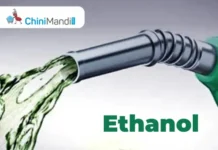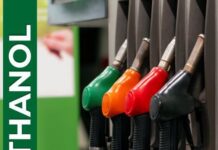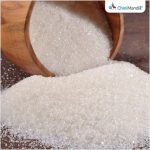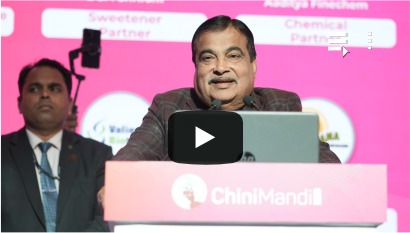The Ministry of Petroleum and Natural Gas had earlier issued a comprehensive response addressing concerns raised about the impact of 20% Ethanol Blended Petrol (E20) on vehicle mileage and engine life. In light of further queries, the Ministry has released the following detailed clarification.
Ministry said that biofuels and natural gas are serving as critical transitional fuels for India, aligning with its commitments to environmental sustainability under the Nationally Determined Contributions (NDC) and the goal of achieving Net Zero emissions by 2070. A study by NITI Aayog on the lifecycle emissions of ethanol indicates that sugarcane and maize-based ethanol reduce greenhouse gas emissions by approximately 65% and 50%, respectively, compared to petrol.
In addition to pollution reduction, there have been transformative benefits in terms of benefits to the rural economy, elimination of sugarcane arrears and improving the viability of maize cultivation in the country. More income to farmers has not only contributed to furthering their well-being but has also helped decisively tackle the challenge of suicides by farmers. It may be recalled that in areas like Vidarbha farmers suicides were widespread a few years ago.
With the Ethanol blending programme, money which was earlier spent on crude oil imports is now going to our farmers who have become “Urjadaatas” apart from being “Annadatas”. During the last eleven years from Ethanol Supply Year (ESY) 2014-15 to ESY 2024-25 upto July 2025, Ethanol blending in Petrol by Public Sector Oil Marketing Companies (OMCs) has resulted in savings/conservation of more than Rs.1,44,087 crore of foreign exchange, crude oil substitution of about 245 lakh metric tonnes providing crucial energy security and CO2 emission reduction of approximately 736 lakh metric tonnes, the equivalent of planting 30 crore trees. At 20% blending, it is expected that payment to the farmers in this year alone will be to the tune of Rs.40,000 crore and forex savings will be around Rs. 43,000 crores.
Concerns related to performance and mileage being raised now were anticipated as early as 2020 by Government and an Inter Ministerial Committee (IMC) of the NITI Aayog examined them at length. This also was backed by research studies carried out by IOCL, ARAI and SIAM.
The use of E-20 gives better acceleration, better ride quality and most importantly, lowered carbon emissions by approximately 30% as compared to E10 fuel. Ethanol’s higher-octane number (~108.5 compared to petrol’s 84.4) makes Ethanol-blended fuels a valuable alternative for higher-octane requirements that is crucial for modern high-compression engines. Vehicles tuned for E20 deliver better acceleration which is a very important factor in city driving conditions. Additionally, Ethanol’s higher heat of vaporization reduces intake manifold temperatures, increasing air-fuel mixture density and boosting volumetric efficiency.
Previously Petrol was being sold in India with Research Octane Number (RON) of 88. Today, regular petrol in India has a RON of 91 to meet the requirements of BS-VI, which aims to reduce harmful emissions. However, this has again been improved further to RON 95 with blending of Ethanol 20, resulting in better anti knocking properties and performance.
The critiques suggesting that E20 causes a “drastic” reduction in fuel efficiency are misplaced. Vehicle mileage is influenced by a variety of factors beyond just fuel type. These include driving habits, maintenance practices such as oil changes and air filter cleanliness, tyre pressure and alignment, and even air conditioning load.
Extensive discussions have been carried out with the Society of Indian Automobile Manufacturers (SIAM) as well as prominent manufacturers of vehicles. The efficiency drop (if any) in E 10 vehicles has been marginal. For some manufacturers, vehicles have been E 20 compatible from as far back as 2009. The question of any drop in fuel efficiency in such vehicles does not arise.
The alternative of going back to E-0 Petrol would involve losing the hard fought gains on pollution and the success achieved in energy transition. The roadmap of the IMC had been in the public domain from 2021 and laid out a calibrated path to reaching E-20. Since then, there has been a period of over 4 years which has allowed vehicle technology to improve, supply chain to be calibrated and an overall eco-system developed.
Furthermore, it is noteworthy that Brazil has been successfully running on E27 for years with zero issues. The same automakers such as Toyota, Honda, Hyundai etc. produce vehicles there too. Moreover, safety standards for E20 are well established through BIS specifications and Automotive Industry Standards. In most parameters including drivability, startability, metal compatibility, plastic compatibility, there are no issues. Only in case of certain older vehicles, some rubber parts and gaskets may require replacement earlier than in case non blended fuel was used. This replacement is inexpensive and can be easily managed during routine servicing. It may need to be done once in the life time of vehicle and is a simple process to be carried out at any authorized workshop.
Some concerns have been voiced that ethanol blended petrol should be cheaper than non blended fuel and that this cost advantage has not been passed on to the customers. They are referring to a NITI Aayog report. In 2020-21, when the Report of NITI Aayog was prepared, Ethanol was cheaper than Petrol. Over time, procurement price of Ethanol have increased and now the weighted average price of Ethanol is higher than cost of refined Petrol.
Currently, the average procurement cost of Ethanol for Ethanol Supply Year 2024-25, as on 31.07.2025, is Rs.71.32 per litre, inclusive of transportation and GST. For producing E20, OMCs blend 20% of this procured Ethanol with Motor Spirit (MS). Price of C-heavy molasses based Ethanol increased from Rs.46.66 (ESY 2021-22) to Rs.57.97 (ESY 2024-25). Price of Maize-based Ethanol increased from Rs.52.92 to Rs.71.86 over the same period. Despite the increase in price of ethanol in comparison to petrol, the oil companies have not gone back on the ethanol blending mandate because the programme delivers on energy security, boosts farmers’ incomes and environmental sustainability.
Ethanol Blending is a national programme. Some seek to derail it by fomenting fear and confusion in the minds of car owners by selectively picking information and creating a false narrative that insurance companies will not cover car damage due to use of E20 fuels. This fear mongering is totally baseless and has been clarified by an insurance company whose tweet screenshot was deliberately misinterpreted to create fear and confusion. Usage of E20 fuel has no impact of the validity of insurance of vehicles in India.
In the meanwhile, automobile manufacturers continue to engage with vehicle owners to provide them any support that may be warranted to ensure optimum performance of vehicles. For a vehicle owner, who believes that his/her vehicle may require further tuning or parts replacement, the entire network of authorized service stations are available to respond to such requests.
There continue to be apprehensions on whether the country will go beyond E-20 very rapidly. Any move beyond E-20 requires careful calibration, for which extensive consultation are underway. This has involved the same vehicle manufacturers who are already in Brazil as well as other manufacturers, entities involved in supply of feed stocks, R&D agencies, oil companies and Ethanol producers. This process is yet to reach conclusion. In the meanwhile, the current roadmap commits Government to E-20 upto 31.10.2026. Decisions for beyond 31.10.2026 will involve submission of the Report of the Inter Ministerial Committee, evaluation of its recommendations, stake holder consultations and a considered decision of Government in this regard. That decision is yet to be taken.
Government remains committed to promoting cleaner, more sustainable fuel options and ensuring that such transitions are implemented with minimal impact on consumers.
(Source: PIB)

















